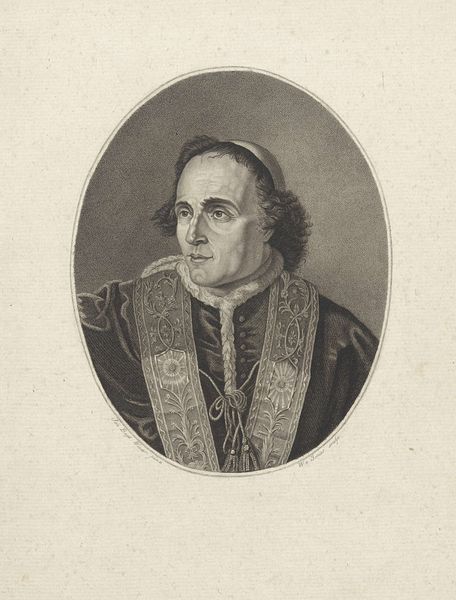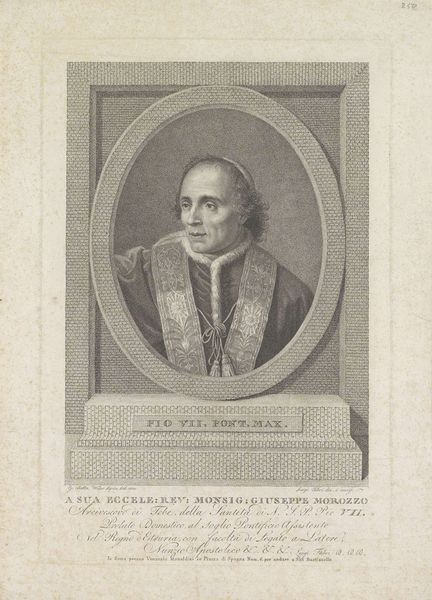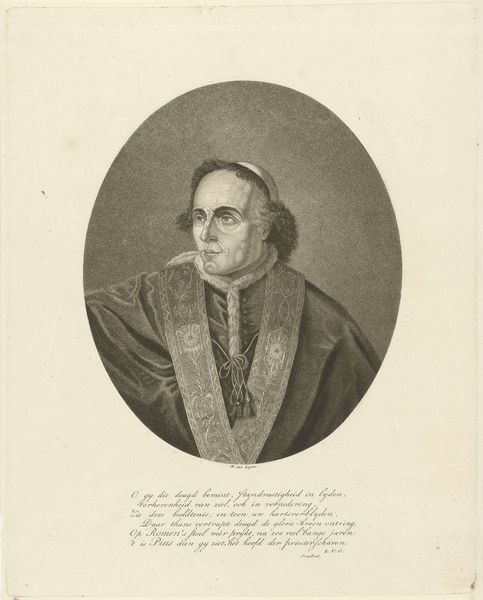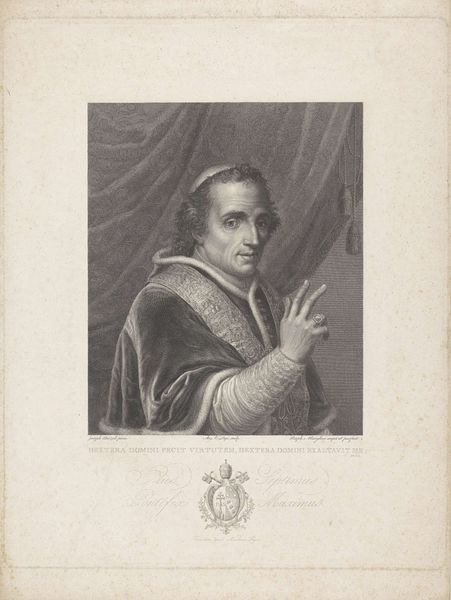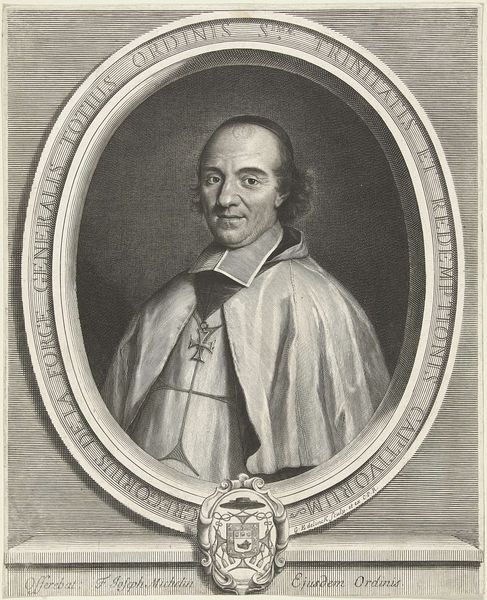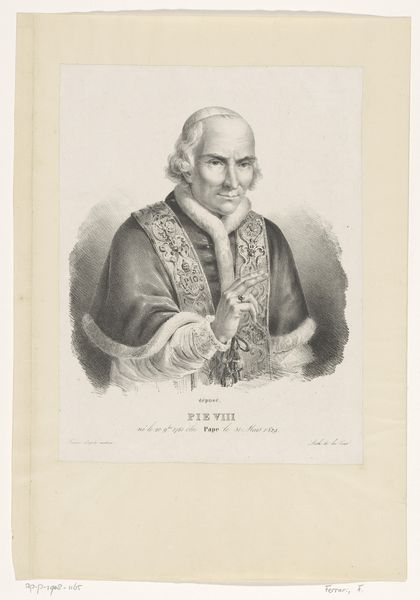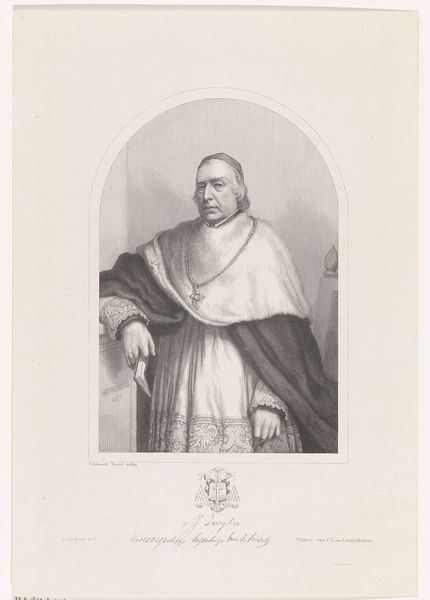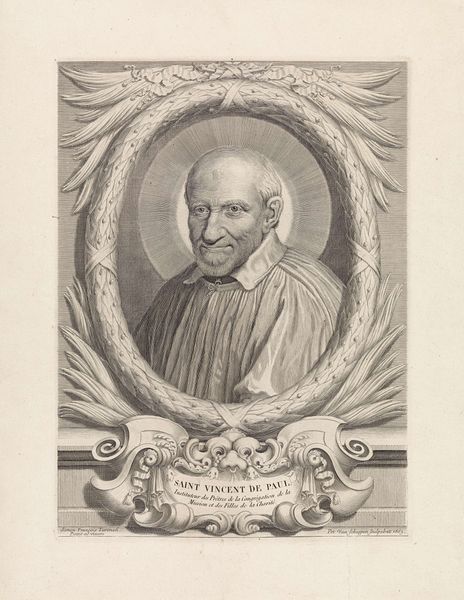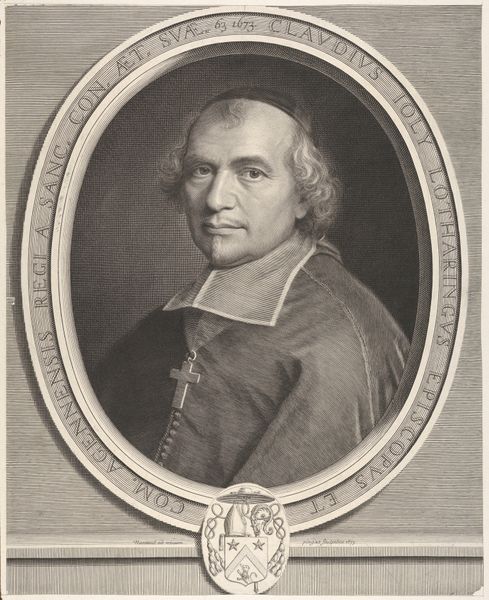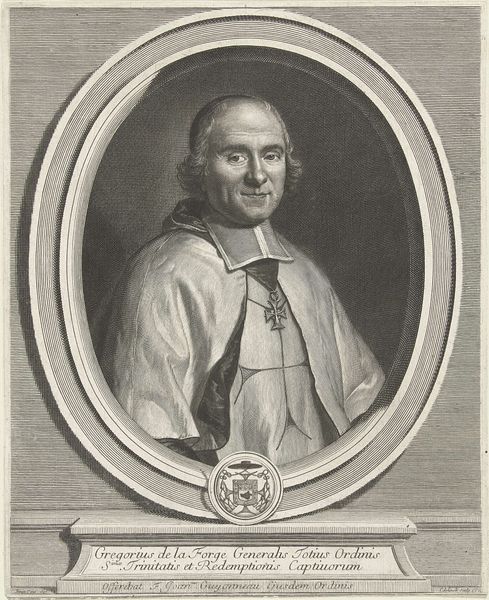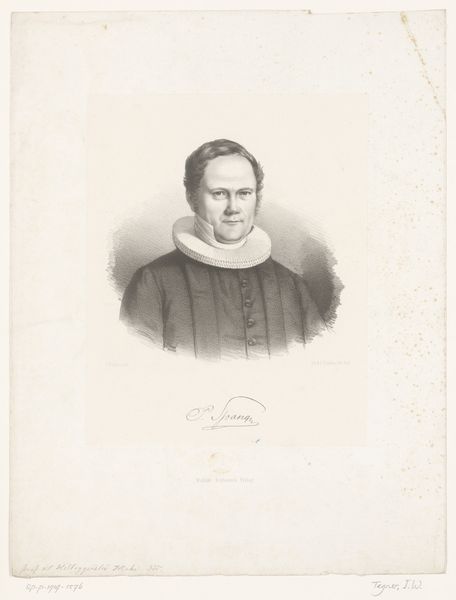
engraving
#
portrait
#
neoclacissism
#
shading to add clarity
#
old engraving style
#
caricature
#
portrait drawing
#
history-painting
#
engraving
Dimensions: height 298 mm, width 244 mm
Copyright: Rijks Museum: Open Domain
Curator: Here we have Willem van Senus’s “Allegorical Portrait of Pope Pius VII," created between 1823 and 1825. The artwork currently resides here at the Rijksmuseum. Editor: My first impression is that the details are so precise given it’s an engraving. There's a stark contrast between the figure's solemn face and the flurry of activity in the symbolic imagery at the base. Curator: The success of the piece, formally, hinges on this interplay. Note how the allegorical details below—the crucifixion imagery, angels overhead—act as framing devices. They push our eye back to the figure of Pius VII, giving him hierarchical significance in the composition. Editor: Right, and the print medium itself speaks to broader distribution, a calculated attempt to reproduce and disseminate papal imagery. Was this widely available, or was it created for an elite audience? What was the process? Who was Senus working for? The engraving would've taken some time, demanding certain tools, inks... Curator: Interesting. While I’m considering the composition and symbolism, you’re focused on the making, the labor behind its construction. As a portrait, it is clearly designed to promote Neoclassical ideals—dignified austerity mixed with religious authority. But your points bring a new depth; these weren't simple devotional images but carefully manufactured objects designed for circulation, yes? Editor: Exactly. Every strike of the burin was deliberate. Look at how Pius’ robes flow but are simultaneously rigid, controlled—that balance between sumptuous material and crafted line tells us about the economic relationships at play here. Who benefitted? Curator: Well, it enriches our understanding. The radiant lines surrounding Pius add another layer to his saintly depiction. What appeared merely decorative might signify divine presence, amplifying the propagandistic element you pointed out earlier. Editor: And to understand the piece fully, it makes us question what 'truth' about Pius VII was Senus was trying to manufacture in 1823, through materials, methods, and distribution. I have a deeper understanding because of this piece. Curator: Indeed, a multi-layered examination can transform even what looks like a simple portrait engraving into something much more intriguing.
Comments
No comments
Be the first to comment and join the conversation on the ultimate creative platform.
